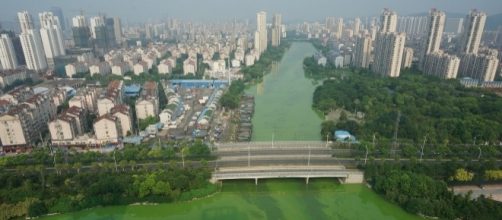The researchers from a bay area company patented a group of three-celled organisms that are capable of generating a significant amount of sugar sufficient for Biofuels. Sandia National Laboratories provides aid to Helio BioSys Inc. in ways to culture the algae into large scale farming.
Algae - A preferred biofuel source
Algae is a source of renewable alternative energy and a preferred supplier of biofuel. Algae used to be in the category of the plant kingdom as it produces its food through photosynthesis and has chlorophyll in it. It is neither plant, animal, or fungi.
Further studies show that the blue-green algae known as cyanobacteria are in the classification of prokaryotes, a single celled micro-organism.
Cyanobacteria is a preferred study among other organisms as it does not compete with food crops and vegetation concerning land, water, and other resources. The wet environment where cyanobacteria thrive is not suitable for agriculture.
Helio BioSys, Inc. is working on the cyanobacteria
The aquatic cyanobacteria also manufacture its food by absorbing sunlight through its blue-green color. The company Helio BioSys, Inc. aims to obtain biofuels from the sugars that the algae excrete directly into the water where they grow. Another goal of the company with the help of Sandia is to cultivate the bacteria en masse for its excretion and their usage for production of biofuels, chemicals, and other products that depend on petroleum.
According to Sandia Biochemist Ryan Davis, biomass cultivation delivers one gram of sugar for every liter. Cyanobacteria deliver four to seven grams of sugar for every liter. The produce yields a concentration of sugar to up to 700 percent more. The result manifests that growing cyanobacteria is more productive than the culture of biomass.
Testing cyanobacteria in the open
After successful trials in a sterile and closed environment, Sandia is now growing the bacteria in bathtub-like structures. Although the surrounding is still a closed structure, the cultured bacteria is now in open air exposure to see if cyanobacteria could survive predation from external factors.
Helio BioSys, Inc. founders Rocco Mancinelli and David Smernoff opt to culture the three cell organism saying that these organisms have a higher rate of survival when grown in greater colonies. The giant sugar water bowls don't usually last in natural conditions, Sandia will see to it that unwanted predatory growth does not happen if they feed on the sugar excreted by cyanobacteria.
Davis and his group are trying to understand if the three cells of the organism perform their respective functions for survival. Like the bacteria has a fix of acquiring nitrogen from the air. This feature allows the cyanobacteria to produce its fertilizer from the air. They are also studying if one of the cells acts as a radiation protector if the sunshine is damaging to their existence.
The founders of Helio BioSys, Inc. plan to license or sell the technology until Sandia Laboratories proves the research successful. They also tapped the other equipment resources to continue the investigation and application of cyanobacteria.
Helio BioSys, Inc. partnered with Lawrence Berkeley National Laboratory for the procurement of their tangential flow filtration equipment at Sandia's test beds. The technology will deploy a box with a porous membrane that will allow the passage of specific-sized molecules. The process will allow Sandia the convenience to separate sugar from the water.
Berkeley Laboratory is now studying the conversion of the segregated sugars into biofuels. Besides biofuels, there is an extensive list of products that are dependent on petroleum.
Marine cyanobacteria, through the biofuels, has the capability of producing oil based products like pharmaceuticals, plastics, adhesives, nylons, fabrics, asphalt and much more.
The project will be due at the end of 2017. Cyanobacteria will be a breakthrough for science in harnessing the sustainable energy from the oldest single celled micro-organism known to man.


